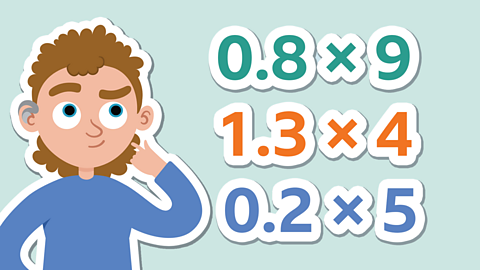What is a decimal number?
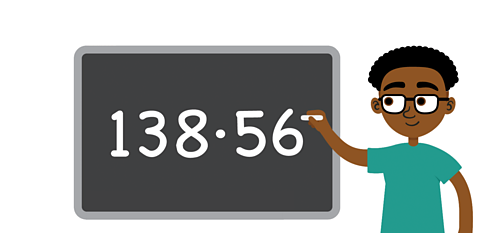
A decimal number is any number made up of the digits 0 to 9. This can include whole numbers and numbers less than 1.
You can use a decimal point to show which digits are whole numbers and which are decimal fractions.
The whole numbers are to the left of the decimal point and the decimal fractions are to the right of the decimal point.

Quiz: Multiply decimals by 10, 100 and 1000
Why not see how much you know about this topic already? Then work through the page and see if you can beat your score.
Using a place value chart
The place value is the position of a digit in a number. The same digit has a different value at a different place in the number.
You can use a place value chart to help see the value of each digit in a number.
Let's put the number 258.35 into a place value chart.

The digit in the hundreds place is 2. It has a value of 200.
The digit in the tens place is 5. It has a value of 50.
The digit in the ones place is 8. It has a value of 8.
The digit in the tenths place is 3. It has a value of 0.3.
The digit in the hundredths place is 5. It has a value of 0.05.
Multiplying decimals by 10
Let's look at the rule for multiplying decimal numbers by 10.
To multiply a decimal by 10, move the digits one place to the left.
For example, let's multiply 3.95 by 10.
3.95 × 10
You can use a place value chart to help you.

You can see that each digit in the number moves one place value column to the left. So:
3.95 × 10 = 39.5
Let's look at another example.
16.14 × 10
Look at the slideshow below to see how the place value of each digit changes when you multiply by 10.
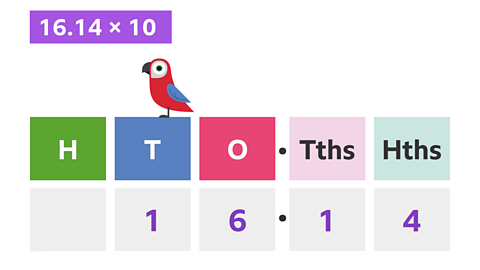
Image caption, Look where the digits are placed. You can see 1 in the tens column and 6 in the ones column. Then there is a decimal point. After the decimal point is 1 tenth (1/10) and 4 hundredths (4/100).

Image caption, See how the place value of all the numbers change by one place when you multiply by 10. Therefore, 16.14 × 10 = 161.4
1 of 2
Multiplying decimals by 100
Multiplying decimals by 100 is the same as multiplying by 10 and then multiplying by 10 again.
Let's look at an example.
3.12 × 100
Look at the slideshow below to see how the place value of each digit changes when you multiply by 100.
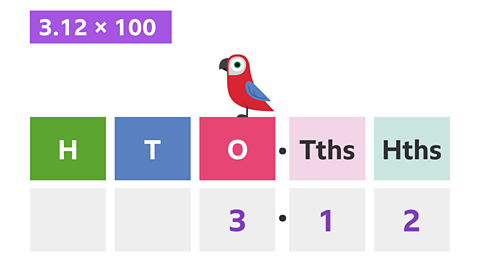
Image caption, Start by putting the number 3.12 into the place value chart. It has 3 tens, 1 tenths and 4 hundredths.

Image caption, When you multiply a number by 100. You move each digit two places to the left in the place value chart. Therefore, 3.12 × 100 = 312
1 of 2
Multiplying decimals by 1000
To multiply by 1000, you move the digits three places to the left.
Let's look at an example:
0.04 × 1000
Look at the slideshow below to see how the place value of each digit changes when you multiply by 1000.
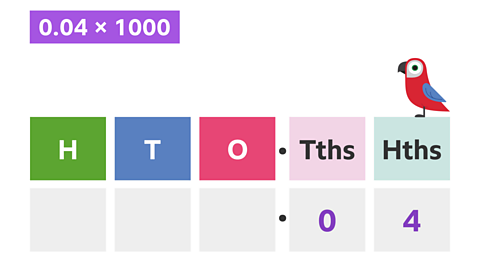
Image caption, A way to help you remember how many places the digits need to move is by looking at the zeros in 10, 100 and 1000. There are 3 zeros in 1000, so you can move the digits 3 places to the left to multiply by 1000. Therefore, 0.04 × 1000 = 40
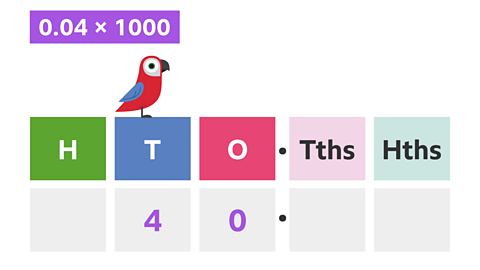
Image caption, Do you notice there is now a zero in the ones column? This is a placeholder to show that there is no value for the ones after the number has been multiplied by 1000. If you missed the zero in the ones column from the number 40, the number would be 4, which is a very different number!
1 of 2
Example 1
Multiplying decimals by 10, 100 or 1000 is useful in everyday life. It can be used to convert measures, such as metres to centimetres, kilograms to grams and litres to millilitres.
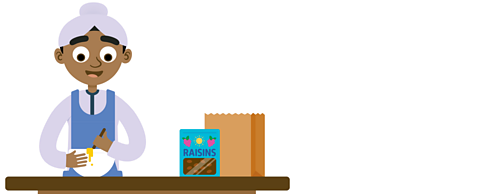
A recipe for granola uses 1.25 kg of raisins. What is this amount in grams?
✓ 1kg is the same as 1000g.
So you can multiply 1.25 by 1000 to find the answer.
1.25 × 1000 = 1250
So, 1.25kg is the same as 1250g
You can use a place value chart to show this.
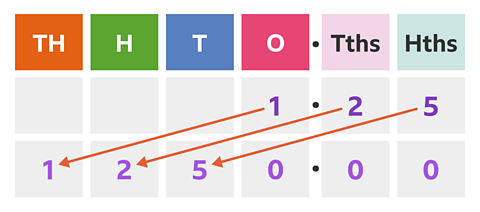
Example 2

Kelly saves up 45p every day for 100 days. How much money has she saved altogether?
✓ In 100 days, Kelly has saved £45.00
To help solve this, did you convert 45p to pounds?
45p is less than £1. There are 100p in £1, so 45p is the same as £0.45
You can multiply 0.45 by 100. Use a place value chart to help.
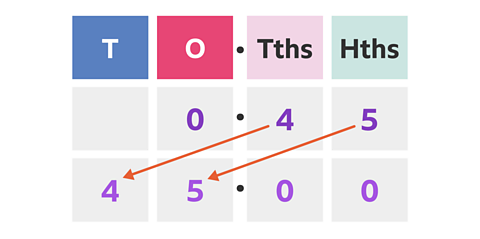
0.45 x 100 = 45
So, in 100 days, Kelly has saved £45.00
More on Multiplying and dividing
Find out more by working through a topic
- count29 of 34
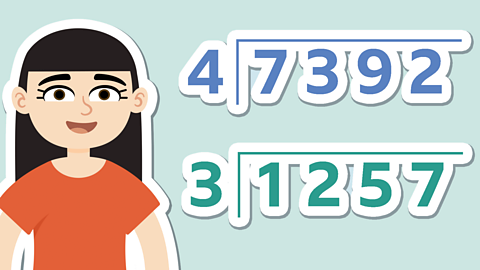
- count30 of 34
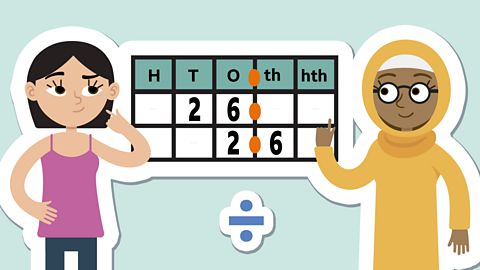
- count31 of 34
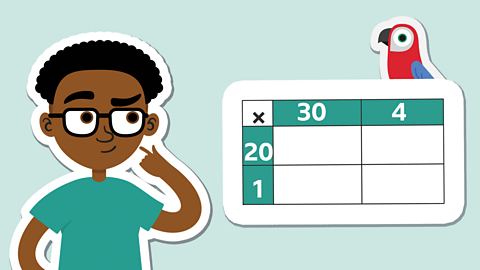
- count32 of 34
